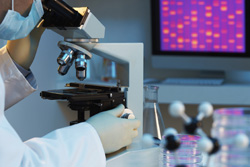Standardising metabolomics
Metabolites are the end-products of all cellular processes within a cell, tissue or organism, and include metabolic intermediates, hormones and other signalling molecules. The high-throughput quantitative and qualitative profiling of the metabolites, referred to as metabolomics, relates to the physiological state within an organism or tissue. However, a lack of standardisation in metabolome analysis methods combined with the absence of a public database holding metabolomic data significantly affect experimental outcomes. In addition, given the immense heterogeneity of metabolites' chemical and physical characteristics as well as their different concentrations, their analysis poses a particular challenge. Against this background, the EU-funded 'Metabolomics: Defining the standards for sample preparation of small molecules' (METABOLOMICSSTANDARD) project aimed to optimise and establish uniform methodologies for sample preparation and extraction. These steps in metabolomics analysis are critical for the preservation of metabolites and for uniformity in the obtained results. Market analysis indicated specific gaps in current sample preparation protocols and thus researchers set out to design and refine the stabilisation strategy. To this end, they examined a list of stabilising agents and adapted the sample preparation protocols accordingly to ensure minimal user interaction during sample collection, storage and shipment. The developed strategy was set up by optimising various parameters, including the pH, redox, enzyme activity and molecule separation. Metabolite analysis was optimised in different biological materials — mainly plant tissue and human blood — and the methods were tested for reproducibility. Two devices were also established that supported the fast stabilisation approach. The developed methodology focused on optimising use of nuclear magnetic resonance (NMR) and liquid chromatography mass spectrometry (LCMS). Collectively, the activities of METABOLOMICSSTANDARD contributed to the advancement of the metabolomics field. Dissemination of the optimised protocols will foster widespread use, thereby making it possible to utilise the metabolic fingerprint of different tissues for disease diagnosis.







